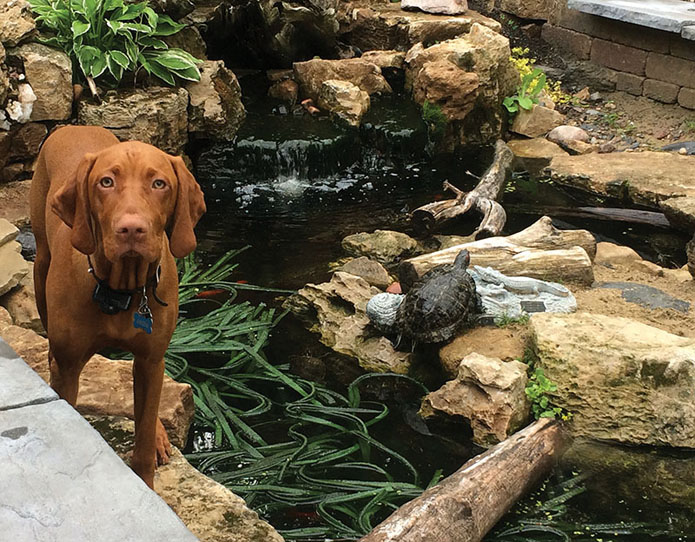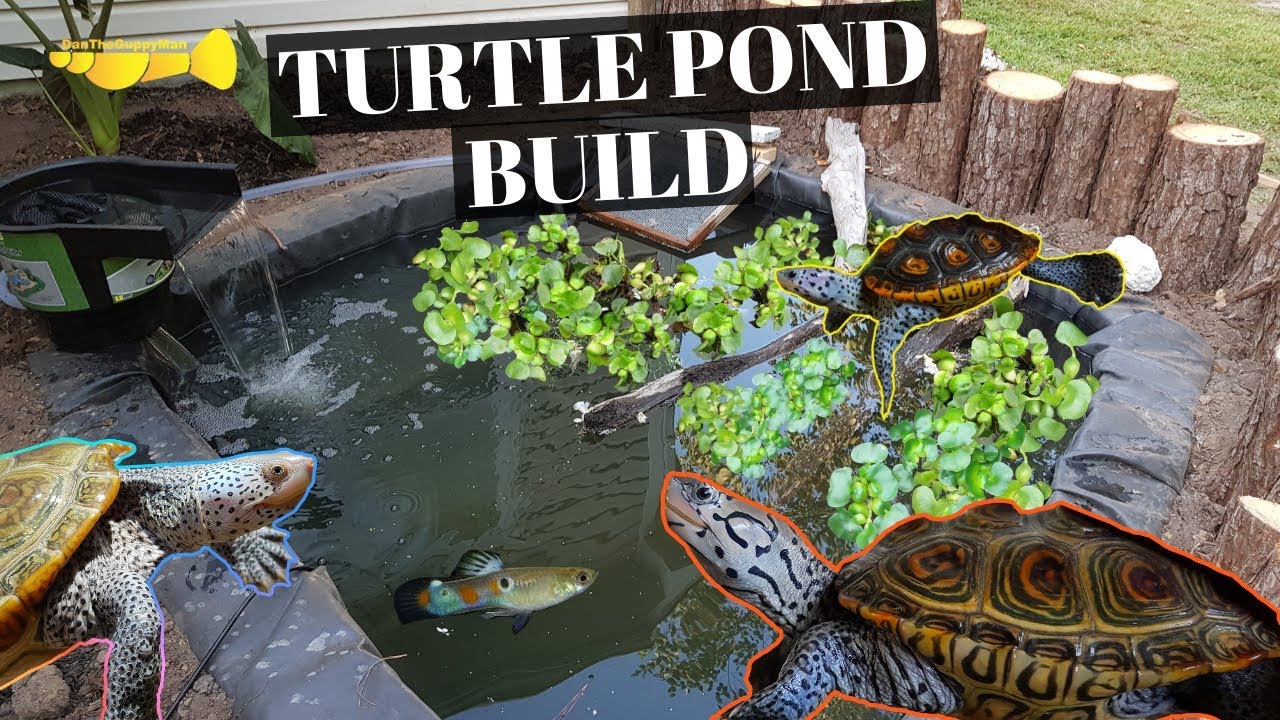To build a turtle pond, select a suitable location, dig a pond, install a filtration system, add plants and rocks, then introduce turtles to their new habitat. Creating a safe and comfortable environment for your turtles is essential for their well-being.
You can enjoy watching these fascinating creatures thrive in their new pond setting. Building a turtle pond is a rewarding project that requires careful planning and attention to detail. By following the necessary steps and providing the right conditions, you can create a beautiful and natural habitat for your turtles to enjoy.
In this guide, we will explore the process of building a turtle pond, from selecting the location to adding the finishing touches that will make it a perfect home for your aquatic friends. Let’s dive in and discover how you can create a serene and inviting space for your turtles to thrive.

Credit: www.pondtrademag.com
Choosing The Right Location
When it comes to building a turtle pond, choosing the right location is crucial for the health and well-being of your aquatic pets. The location of your pond will determine the amount of sunlight it receives, as well as its accessibility for maintenance and enjoyment. In this section, we will discuss the key factors to consider when selecting the perfect spot for your turtle pond.
Sunlight Requirements
Turtles thrive in environments with ample sunlight, as it helps to maintain the water temperature and supports the growth of aquatic plants. Choose a location that receives at least 6-8 hours of direct sunlight each day. This will not only promote the health of your turtles but also create a natural and vibrant ecosystem within the pond.
Accessibility
Accessibility is essential for maintaining and enjoying your turtle pond. Ensure that the chosen location allows for easy access for cleaning, feeding, and general maintenance. Consider proximity to a water source for easy refilling and a convenient electrical outlet for pond pumps and filtration systems.
Designing The Turtle Pond
Discover the art of creating a harmonious environment for your pet turtle with a well-designed pond. Learn how to build a turtle pond with the right materials and techniques to ensure your aquatic friend thrives in their new habitat.
Building a turtle pond can be a fun and rewarding project that provides a safe and comfortable home for your pet turtles. However, before starting the construction, it’s essential to carefully plan and design the pond to ensure it meets the needs of your turtles. In this section, we’ll discuss the key considerations for designing a turtle pond, including the size and shape of the pond, and the shelter and basking areas.Pond Size And Shape
The size and shape of the pond are crucial factors that determine the overall comfort and well-being of your turtles. As a general rule, the pond should be at least four times the size of your largest turtle and should have a minimum depth of 18 inches to allow for swimming and diving. The shape of the pond can vary depending on your preferences, but it’s essential to ensure that it provides enough open space for swimming and basking.Shelter And Basking Areas
Turtles need both shelter and basking areas to regulate their body temperature and protect themselves from predators. You can provide shelter by adding rocks, logs, and plants around the pond, creating hiding places for your turtles. Basking areas can be created using rocks or logs that are partially submerged in the water, providing a dry area for your turtles to rest and soak up the sun. It’s important to ensure that the basking areas are sturdy enough to support the weight of your turtles and placed in a sunny spot to provide enough warmth. In conclusion, designing a turtle pond requires careful planning and consideration of the size, shape, shelter, and basking areas. By following these guidelines, you can create a safe and comfortable home for your pet turtles that they will enjoy for years to come.Selecting The Right Materials
When building a turtle pond, selecting the right materials is crucial to ensure the long-term success and sustainability of the pond ecosystem. By choosing the appropriate liners, sealants, and filtration system, you can create a healthy and thriving habitat for your aquatic pets.
Liners And Sealants
Choosing the right liner for your turtle pond is essential for preventing leaks and maintaining water levels. Durable and puncture-resistant materials such as EPDM rubber or PVC liners are ideal for ponds as they provide a reliable barrier against water seepage. Additionally, sealants such as pond foam or silicone can be used to secure the edges and seams of the liner, further enhancing its waterproofing capabilities.
Filtration System
A well-designed filtration system is essential for maintaining the water quality in your turtle pond. Mechanical filtration components such as filter pads and screens help to remove debris and solid waste, while biological filtration media such as bio-balls or ceramic rings promote the growth of beneficial bacteria that break down harmful substances in the water. UV sterilizers can also be incorporated into the system to eliminate algae and pathogens, ensuring a clean and healthy environment for your turtles.

Credit: m.youtube.com
Adding Water And Landscaping
When building a turtle pond, adding water and landscaping are crucial steps in creating a natural and comfortable environment for your shelled friends. It’s important to provide a balance of aquatic and terrestrial spaces for the turtles to thrive. Here are the essential steps for adding water and landscaping to your turtle pond.
Filling The Pond
To fill the pond, start by adding a layer of sand to the bottom to create a natural substrate for aquatic plants and a comfortable surface for your turtles. Next, carefully fill the pond with water, ensuring it is dechlorinated to provide a safe environment for your turtles. Monitor the water level to prevent overflow and adjust as needed. Finally, add a water filter to maintain water quality and clarity, creating a healthy habitat for your turtles.
Planting Vegetation
Select a variety of aquatic plants, such as water lilies, water lettuce, and duckweed, to provide shade, shelter, and natural filtration for the pond. Plant the vegetation in the submerged areas of the pond, ensuring they have enough space to grow and thrive. Consider adding terrestrial plants around the pond’s perimeter to create a visually appealing and natural landscape for your turtles. Additionally, incorporating rocks and driftwood can provide basking areas and add aesthetic value to the pond environment.
Introducing Turtles To The Pond
Introducing turtles to the pond is an important step in creating a thriving ecosystem. It’s essential to acclimate the turtles properly and monitor their behavior to ensure they adapt well to their new environment.
Acclimating The Turtles
When introducing turtles to the pond, it’s crucial to acclimate them gradually. Start by placing the turtles in a shallow container of pond water for a few hours each day, gradually increasing the time over the course of a week. This helps them adjust to the temperature and water conditions of the pond.
Monitoring Behavior
After introducing the turtles to the pond, it’s important to monitor their behavior closely. Observe how they interact with the environment, including their swimming patterns, basking habits, and feeding behavior. Keep an eye out for any signs of distress or unusual behavior, as this could indicate that the turtles are struggling to adapt to their new habitat.
Maintaining The Turtle Pond
Discover tips for building a turtle pond. Start by choosing a suitable location and size, ensuring proper filtration, and adding basking spots for your shelled friends. Maintain water quality with regular cleaning and monitoring to create a thriving habitat for your beloved turtles.
Maintaining the Turtle Pond Maintaining a turtle pond is essential for the health and well-being of the turtles and the overall ecosystem. Proper water quality management and regular cleaning are crucial aspects of maintaining a turtle pond.Water Quality Management
Maintaining the water quality in the turtle pond is vital for the health of the turtles. Regular testing of the water parameters such as pH levels, ammonia, nitrite, and nitrate concentrations is necessary. Use a reliable water testing kit to monitor these parameters. Ensure that the water is well-oxygenated to support the aquatic life, including the turtles. Incorporate aquatic plants in the pond to help in natural filtration and oxygenation.Regular Cleaning
Regular cleaning of the turtle pond is essential to prevent the buildup of waste and debris. Remove any uneaten food and debris from the pond regularly to maintain water clarity and quality. Perform partial water changes on a regular basis to prevent the accumulation of harmful substances and to replenish essential minerals for the turtles. Clean the filter system regularly to prevent clogging and ensure efficient filtration. Remember, a well-maintained turtle pond provides a healthy and thriving environment for the turtles, contributing to their overall well-being.Ensuring Safety And Security
To ensure safety and security when building a turtle pond, it is crucial to select a suitable location away from predators. Installing a sturdy fence and adding floating plants can provide a safe environment for the turtles to thrive. Remember to regularly monitor water quality for optimal health.
When it comes to building a turtle pond, ensuring safety and security should be a top priority. Not only do you need to protect your turtles from predators, but you also need to childproof the area to prevent accidents. Here are some tips to ensure the safety and security of your turtle pond.Predator Protection
Predators such as raccoons, herons, and cats can pose a significant threat to your turtles. To protect your turtles from these predators, you can take the following measures:- Install a fence around the pond to keep predators out.
- Use a net or wire mesh to cover the pond and prevent herons from fishing.
- Use motion-activated sprinklers to scare away predators.
- Plant bushes and tall grass around the pond to create a barrier that predators cannot penetrate.
Childproofing
If you have children or visitors around the turtle pond, you must ensure that the area is safe for them. Here are some tips to childproof the pond:- Build a sturdy fence around the pond and install a gate with a lock.
- Ensure that the pond is not too deep and has a gradual slope.
- Remove any sharp rocks or objects from the pond.
- Ensure that the pond’s edges are not slippery, and install non-slip mats or tiles.
- Teach children not to touch or disturb the turtles and to wash their hands after handling them.
Enjoying Your Turtle Pond
Observing Behavior
Watching your turtles interact in their natural habitat can be a rewarding experience. From basking in the sun to swimming gracefully, observing their behavior is both fascinating and educational. Take note of how they interact with each other and their environment, as this can provide valuable insights into their well-being.
Creating A Relaxing Environment
It’s essential to provide a serene and relaxing environment for your turtles to thrive. Creating a relaxing environment involves ensuring the water quality is optimal, maintaining a suitable temperature, and incorporating natural elements such as plants and rocks for them to explore and hide. This will encourage your turtles to exhibit natural behaviors and lead to a more enjoyable pond experience for both you and your aquatic friends.

Credit: www.pinterest.com
Conclusion
Creating a turtle pond is a rewarding project that requires careful planning and maintenance. By following these steps, you can provide a safe and healthy habitat for your shelled friends. Remember to consider the size, filtration, and landscaping to ensure a thriving ecosystem for your turtles.
Happy pond building!






Leave a Reply